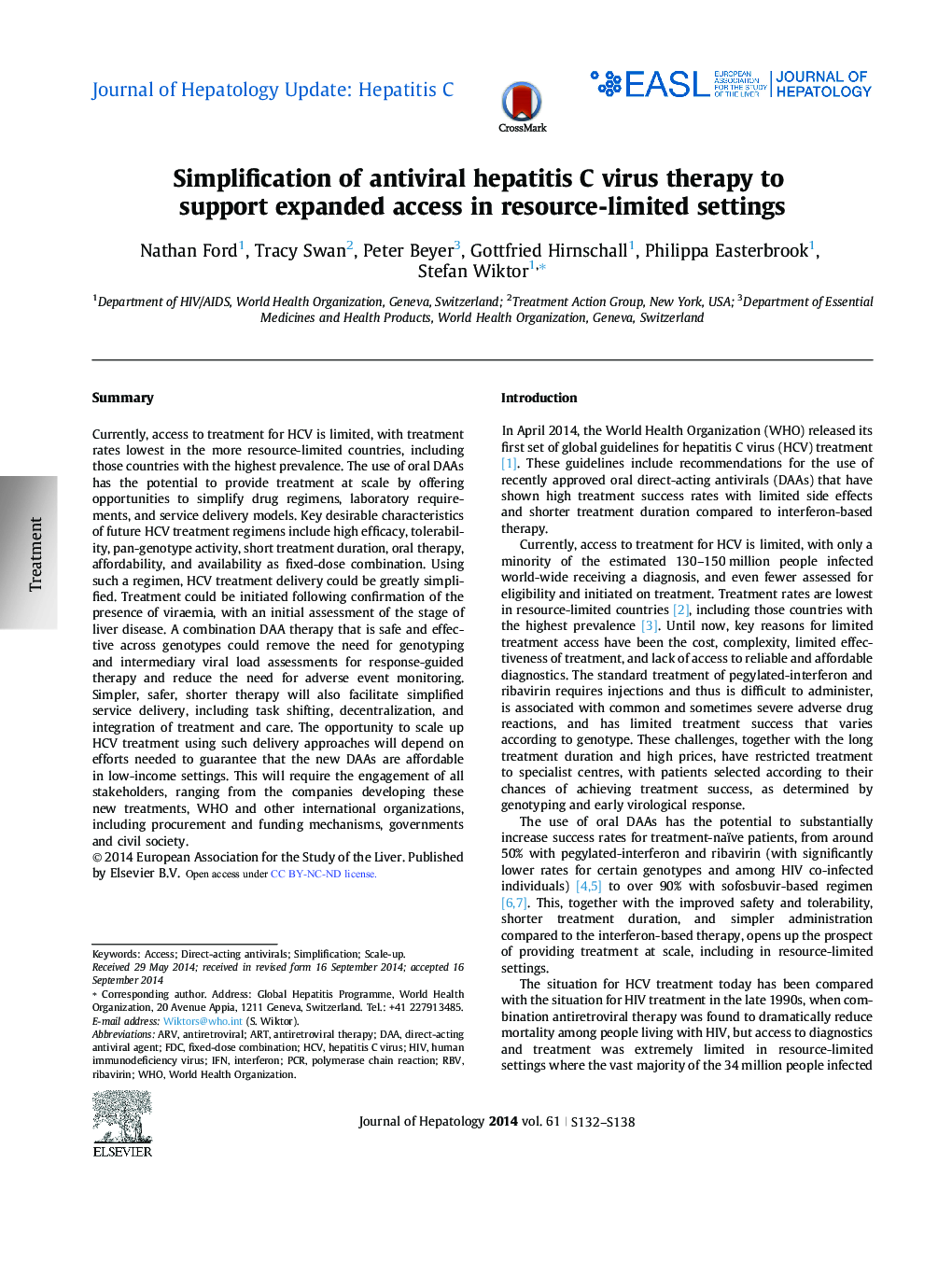| Article ID | Journal | Published Year | Pages | File Type |
|---|---|---|---|---|
| 6103345 | Journal of Hepatology | 2014 | 7 Pages |
SummaryCurrently, access to treatment for HCV is limited, with treatment rates lowest in the more resource-limited countries, including those countries with the highest prevalence. The use of oral DAAs has the potential to provide treatment at scale by offering opportunities to simplify drug regimens, laboratory requirements, and service delivery models. Key desirable characteristics of future HCV treatment regimens include high efficacy, tolerability, pan-genotype activity, short treatment duration, oral therapy, affordability, and availability as fixed-dose combination. Using such a regimen, HCV treatment delivery could be greatly simplified. Treatment could be initiated following confirmation of the presence of viraemia, with an initial assessment of the stage of liver disease. A combination DAA therapy that is safe and effective across genotypes could remove the need for genotyping and intermediary viral load assessments for response-guided therapy and reduce the need for adverse event monitoring. Simpler, safer, shorter therapy will also facilitate simplified service delivery, including task shifting, decentralization, and integration of treatment and care. The opportunity to scale up HCV treatment using such delivery approaches will depend on efforts needed to guarantee that the new DAAs are affordable in low-income settings. This will require the engagement of all stakeholders, ranging from the companies developing these new treatments, WHO and other international organizations, including procurement and funding mechanisms, governments and civil society.
